Two case studies in Spain have been used as Living Labs to demonstrate the results of the BIM4Ren project in real renovation process of residential building pursuing different purposes. All have been energy retrofitted from 2019 to 2022 by the contractor company specialised in renovation and BIM4ren consortium member, Kursaal Group.
The 2 use cases selected as pilots for BIM4Ren project in Spain are:
- Pilot case 1: Serapio Mujika 18 (Donostia- San Sebastián) which has been benchmarked in terms of the process performance with the similar building located in Bertsolari Txirrita, used as baseline without BIM tools.
- Pilot case 2: Gaztainondo 1-3-5 (Irun), which main purpose is the assessment of the energy efficiency before and after the renovation through different tools developed within the project.
Serapio Mujika 18 (Donosti/San Sebastián)
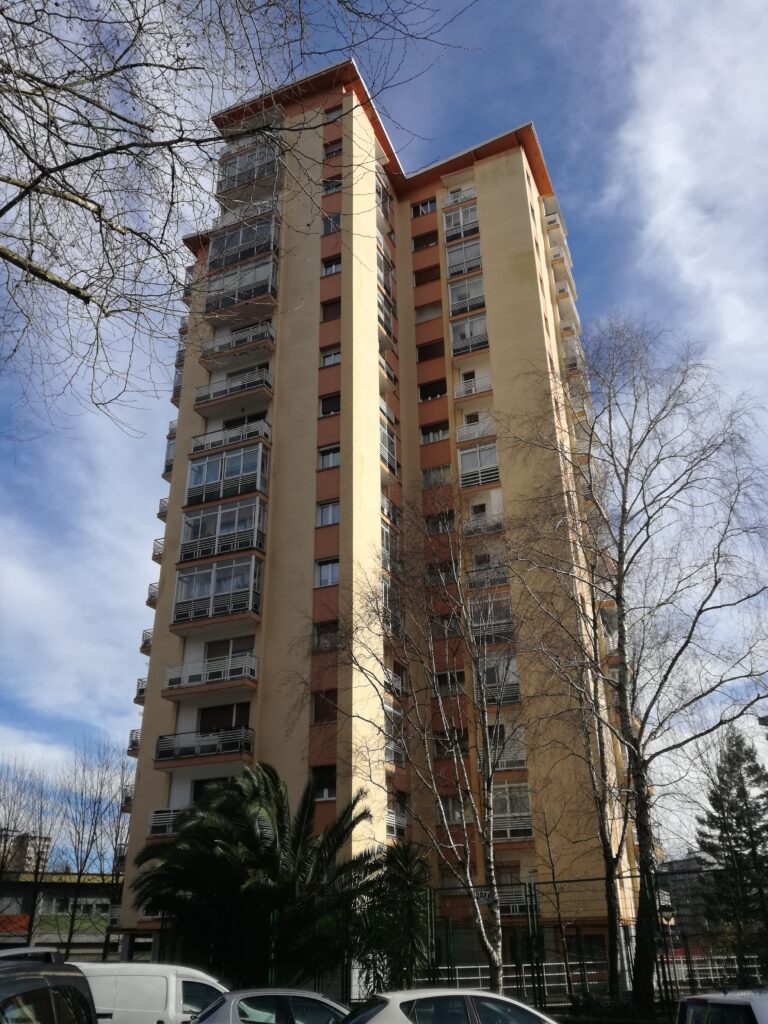
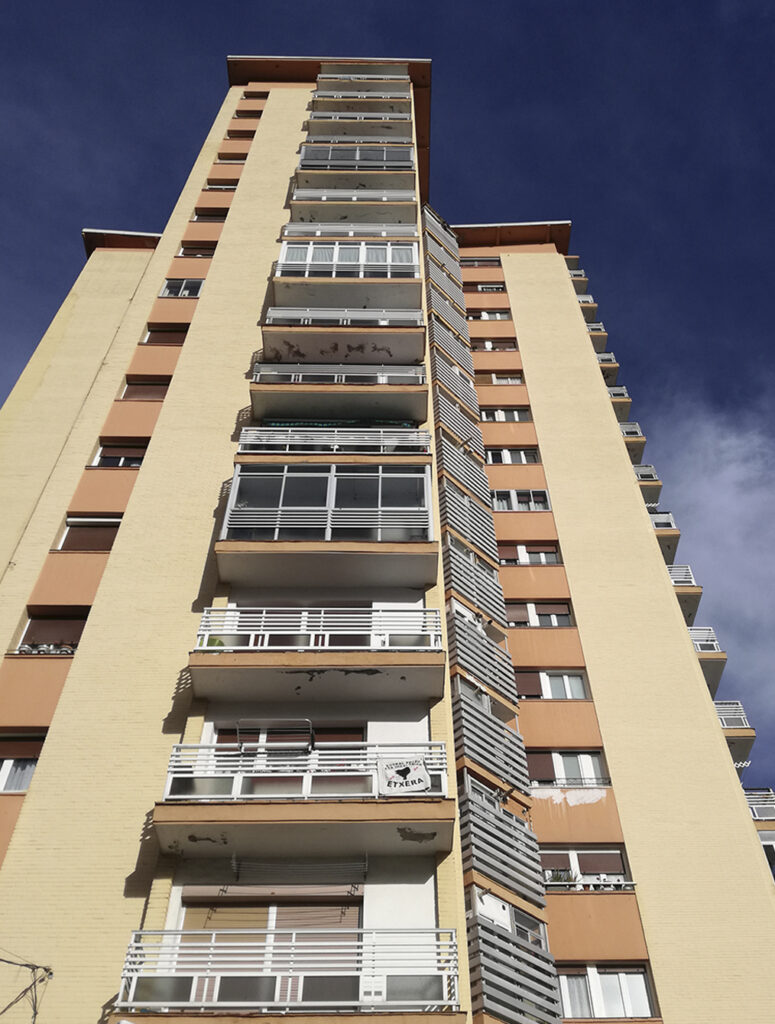
The building located in Serapio Mujika 18, is a multistorey residential tower-type building, built in 1967. It consists of 15 storeys with four dwellings per floor, a ground floor, with a dwelling and business premises and a semi-basement floor occupied by various business premises. The façade requires an urgent intervention due to the structural degradation of the cantilevered balconies and their weak thermal performance due to the lack of insulation.
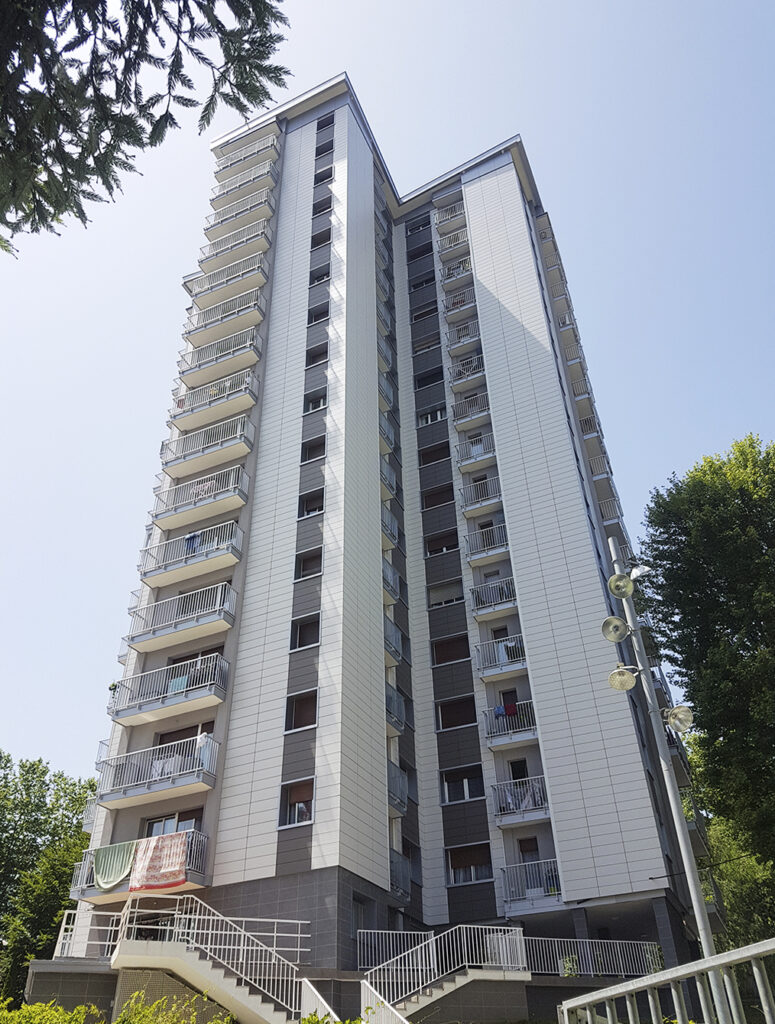
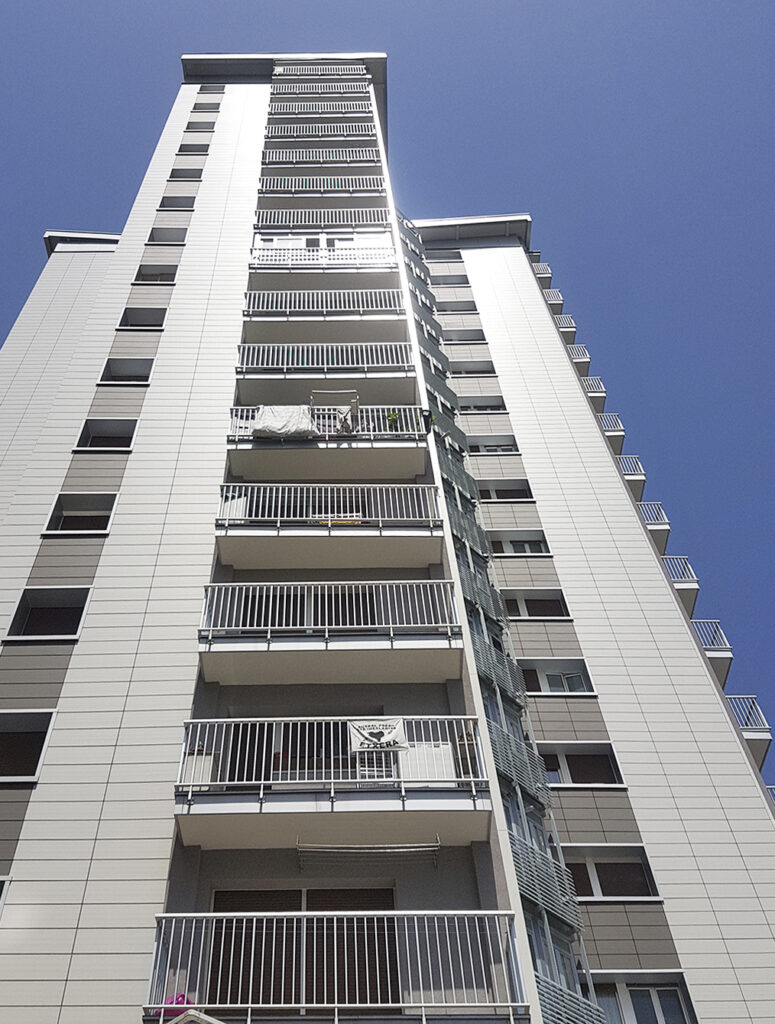
The building was energy retrofitted between 2000 and 2022. The works consisted of façade retrofitting with ceramic ventilated façade system and external thermal insultation (ETICs) on the façades where balconies are located, ground floor façades and courtyard façades, as well as addition of insulation under the roof. Moreover, other functional works such as upgrading of installation, restoration of damaged surfaces and waterproofing of balconies were performed.
The BIM methodology was implemented in different phases of the process through the use of BIM based tools and technologies, i.e. 3D scanner in Data acquisition, REVIT for Design and ZUTEC for the construction phase. The results in terms of the process performance will be compared with the ones achieved in the baseline, a building located in Bertsolari Txirrita 38 with similar geometry, renovation typology but without the use of BIM tools in the process. The methodology KPI4Ren developed in the project is being applied aiming at assessing the digital renovation process improvement through KPIS in comparison with the traditional process. Additionally, the pilot has been the testing and training laboratory for the tools developed in the project more related to the optimization of the construction process such as ZUTEC and CAIA for task management.
Gaztainondo 1-3-5 (Irun)
The building located in Gaztainondo n1-3-5; Irun is a residential multi-story building which was built approximately in 1975. It is an eight-floor building with four dwellings by floor and entrances. Moreover, the ground floors (basement and the low level) of the building are destinated to commercial premises. It also has a floor under the roof for the machinery of elevators and storage rooms. The lack of insulation on the façades and the multiple thermal bridges has brought on humidity leading to condensation inside the dwellings. The lack of waterproofing on the balconies has caused filtration moistures and cracks due to the oxidation of the reinforcements. There have also been detachments of the finishing brick and the joinery is in poor conditions.
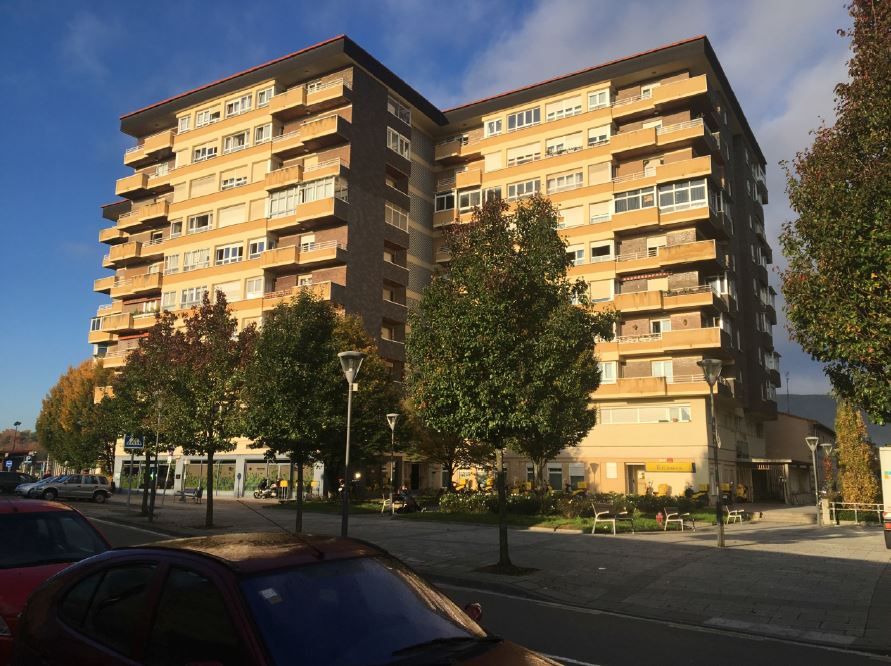
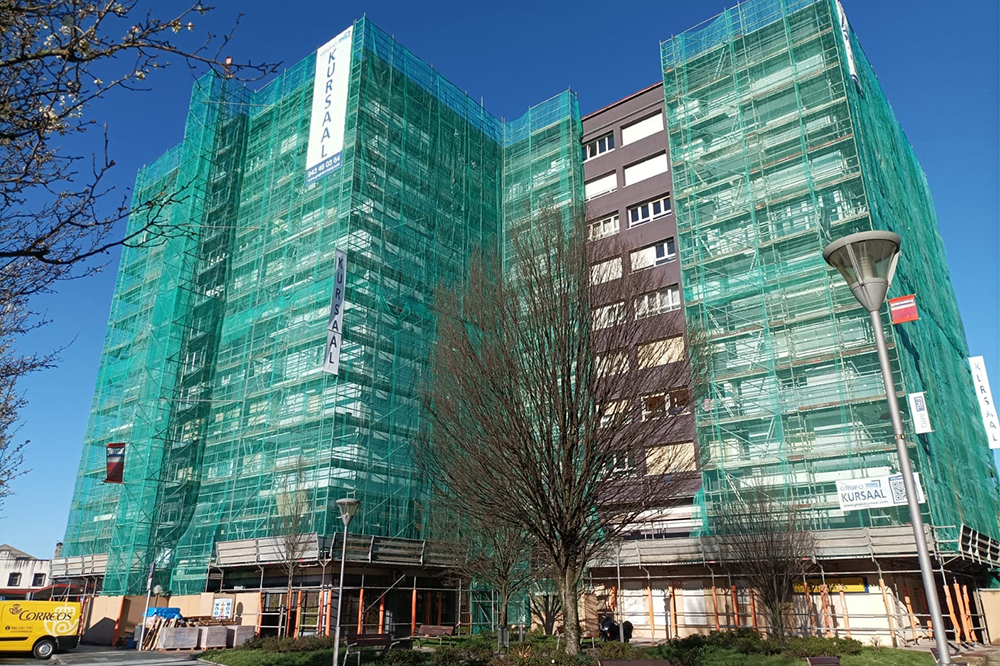
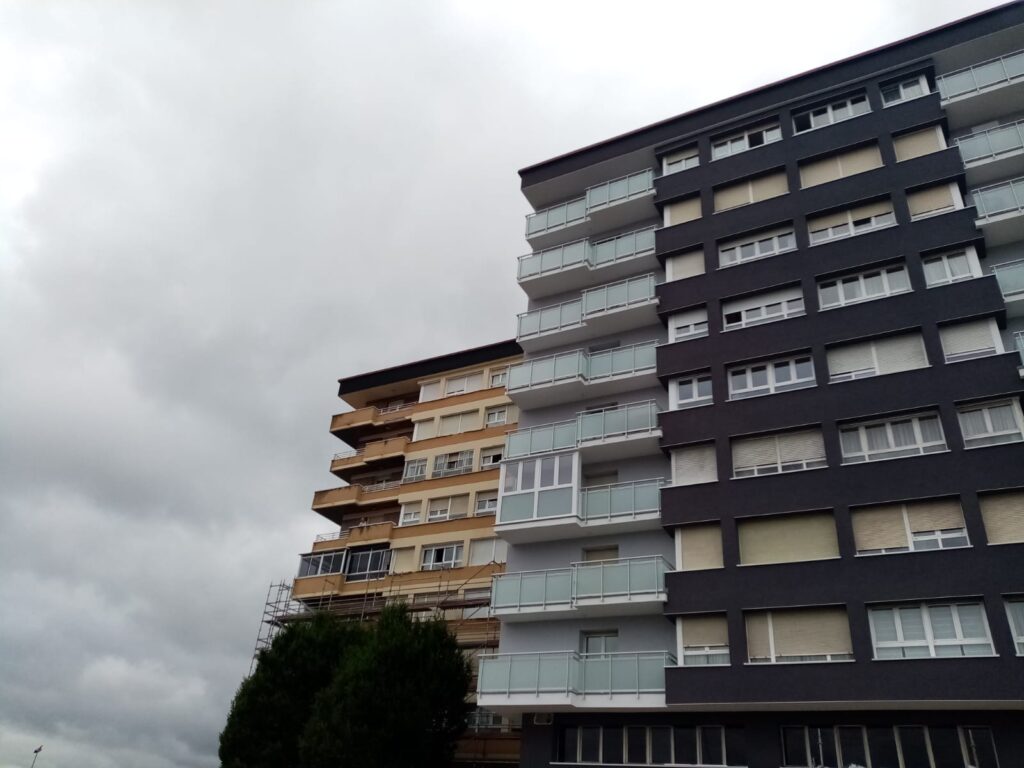
The renovation works have consisted of energy retrofit of façades with external thermal insulation (ETICs) and replacement of windows as well as other functional works such as upgrading of installation, restoration of damaged surfaces and waterproofing of balconies were performed.
The pilot has served also for testing the BIM4ren developments The ambition of the project is the energy performance improvement and the tools used were aimed at energy simulation, from data acquisition (internal and external), the energy calculation and until the monitoring of the real conditions. Tools such as GIS2IFC, Plans2BIM, PIECE and AR2Built have been applied for off-site geometry acquisition, DAGABOT for damages assessment, whereas BIM4Ren tools such as 3Btool, BASe+ and Feedback Bot tool were used and tested for energy simulation. The main objective is to benchmark the results of the different simulation models and find out the most suitable one in terms of accuracy, cost efficiency, friendliness and quickness according to each use case.
In the following months the OSAP platform which is still in development will be tested on the pilots demonstrating that the tools can work either separately or integrated in a platform which can guide the user in the whole renovation process through the ecosystem of Bim4ren tools.
As a conclusion, in the Spanish pilots the selected BIM4Ren tools have been tested providing continuous feedback to the developers in order to fit the tools to the user’s needs. At the same time, the use and training on the BIM4ren tools has allowed to the stakeholders involved in the project to get closer to the BIM methodology in renovation and it has engaged them with the BIM4Ren philosophy. In other words, the pilots have been used as Living Laboratories for testing, training, learning, discussion and collaboration which is, after all, what BIM methodology pursues.